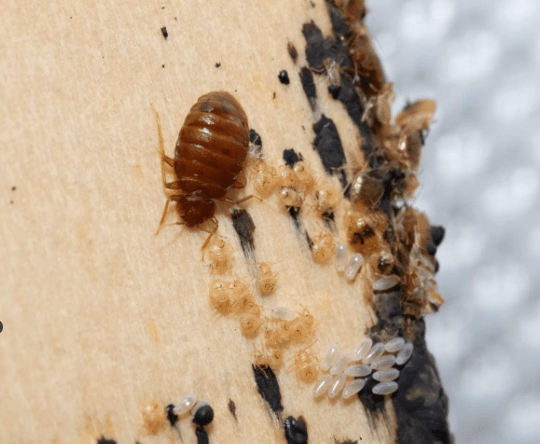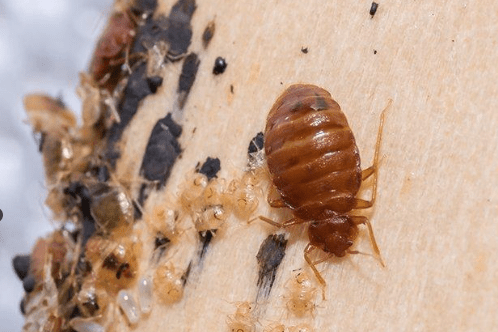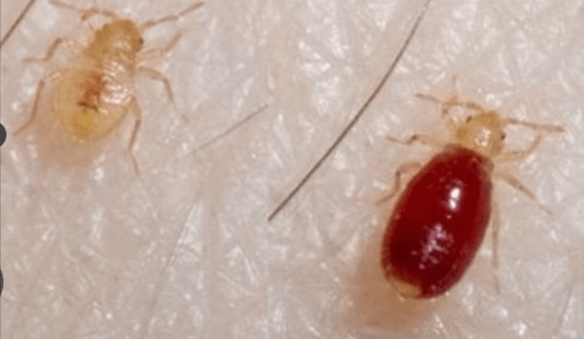Page Contents:
What is Bed Bug Larvae?
Bed bug larvae, also known as nymphs, is what bed bugs are called during the immature stage of the bed bug life cycle.
(Emerging after the eggs hatch).
They are small, translucent or whitish-yellow, and similar in appearance to adult bed bugs but smaller. The larvae feed on human or animal blood, undergoing a few molting stages before reaching adulthood.
Here are 5 traits about bed bug larvae.
1. Development:
The development of bed bug larvae involves a series of molting stages. They undergo five molts before reaching adulthood, requiring a blood meal at each stage to facilitate this growth. With every molt, the larvae increase in size, gradually adopting the characteristics of adult bed bugs.
2. Feeding:
Like their adult counterparts, bed bug larvae are hematophagous, meaning they feed on blood. They are primarily nocturnal creatures, emerging from their hiding spots at night to feed. The larvae target both humans and animals, drawing the necessary nourishment for their development from these blood meals.
3. Bites:
The bites inflicted by bed bug larvae resemble those of the adults, manifesting as itchy, red welts on the skin. These bites often appear in a distinct pattern, typically forming a line or cluster. Each bite marks the spot where a larva has fed, drawing the blood required for its growth.
4. Habitat:
Bed bug larvae are adept at concealing themselves during the day. They seek refuge in the cracks, crevices, and folds of mattresses, furniture, and walls. Their proximity to sleeping areas ensures a ready supply of hosts for feeding.
The larvae, like adults, are particularly active at night when they venture out to feed.
5. Prevention and Control:
Preventing and controlling bed bug infestations involve regular inspections of sleeping and adjacent areas for signs of the pests. Maintaining cleanliness is crucial as it reduces potential hiding places for the bugs.
In the event of an infestation, professional pest control services are often required to effectively eliminate both larvae and adult bed bugs.
What Does Bed Bug Larvae Look Like?
Bed bug larvae, often referred to as nymphs, are small and range from 1 to 5 mm in length. They have a translucent or whitish-yellow color, making them harder to spot on most surfaces.
Their body is oval-shaped and becomes more brownish and opaque as they feed on blood and mature. The nymphs resemble miniature versions of adult bed bugs but are lighter in color.
Do Bed Bug Larvae Look Like Worms?
Not particularly. Up close bed bug larvae do not look like worms.
Worms are elongated, cylindrical, and legless. As mentioned above, bed bug nymphs are small, oval-shaped, and have six legs. The two have distinctly different appearances, so bed bug larvae should not be confused with worms.
Do Bed Bug Larvae Look Like Maggots?
Bed bug larvae and maggots can be mistaken for each other due to their small size and pale color, but they have distinct differences.
Maggots are the larval stage of flies. They are legless, have an elongated, worm-like appearance, and are typically found in decaying organic material, where they feed.
So, while both are small and pale, their shape, behavior, and habitat are different, making it possible to distinguish between the two upon closer inspection.
Bed Bug Larvae Pictures



For additional pictures feel free to check out our bed bug gallery.
Do Bed Bug Larvae Move?
Yes, bed bug larvae (nymphs) do move. They are mobile and actively seek out hosts to feed on blood, which is essential for their growth and development.
Bed bug nymphs are known to move quickly when searching for a meal or retreating to their hiding places, typically in cracks, crevices, and folds of mattresses, furniture, and walls.
Their movement is more noticeable at night when they are most active, as they are nocturnal pests.




